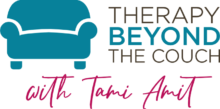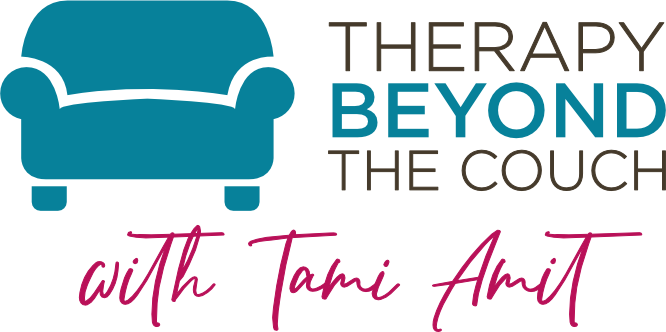The ‘I am not important/I don’t matter’ core belief
The Core Belief Quiz
The Core Belief
that is sabotaging your life and blocking your growth is:
“I am not important enough.”
Dear Friend,
Your core belief, “I am not important enough” is a lie your brain has been telling you for years. You can come up with hundreds of experiences that supposedly prove this belief, but that is only because it controls what you pay attention to (and what you ignore), how you interpret the world, and how you make sense of your place in it. That’s why this belief seems valid, but it is not!
Perhaps people have explicitly said to you ‘You are not important’ or asked you ‘Who do you think you are?’ but they were unfortunately and wrongfully projecting onto you their own erroneous core beliefs.
You may already know in your conscious mind that this belief is false (and that’s great!), but in your subconscious mind, which controls up to 95% of your daily life, this belief is a foundational truth!
And so you continue to attract people and situations to your life that validate the belief, “I am a burden.”
Your own version of this core belief may be “No-body cares,” “Other people’s needs are more important than mine,” “I don’t matter,” or “I don’t have value”. These are just different versions of the same belief.
Becoming aware of your Core Belief is an essential part of taking back control of your life and creating the life you desire.
What about You?
You care strongly about belonging even though you may have developed a protective pattern of pushing people away.
You tend to be either an overachiever and a high functioning human, (especially in areas where you can receive acknowledgement) or an off-the grid type person who rejects society’s rules. Both of those protective patterns are there to ensure that your deep fear of being unimportant is never proven true. Both of those protective patterns disconnect you from people and ultimately reinforce your fear.
You feel your emotions intensely and have a sensitive heart and a kind soul. You get easily triggered whenever someone excludes you or doesn’t acknowledge who you are and what you have contributed and accomplished. You often feel misunderstood. You tend to feel down or anxious depending on how hopeful you are or how much fight you have left inside you. Sometimes you feel that life is a battleground, and often, you feel alone.
You create stories in your mind about why certain events occur (even ones that likely have very little to do with you) and you interpret them to mean that you are not important enough. Here are some examples:
“They cut me off because I am not important.”
“The waiter is taking too long because I don’t matter.”
“My partner came home later because he/she/they don’t care about my feelings.”
“Unless I get top marks, they won’t see me.”
“They don’t listen because they don’t value what I have to say.”
What is a Core Belief?
A core belief (also called a limiting belief) is a biased conclusion about yourself created when you were a young child.
Imagine a five-year-old child signing a contract that determines everything that happens for the rest of his/her/their life. Seems unreasonable, right? Well, that is what a core belief is – an interpretation created during a vulnerable age when our understanding of reality is skewed and incomplete.
Once created, the belief acts as a lens through which you perceive everything that happens to you. Present in every interaction, it automatically poses the question, “What bad thing does this say about me?” (The answer is never good!)
Throughout your life, stimuli from either the internal or external environment can trigger this belief or “press its button,” activating shame, sadness, fear and other detrimental feelings, thus dominating your experience of reality.
You unintentionally communicate your core beliefs to other people, even when your words say the opposite. People unconsciously sense and respond to your core beliefs much more than to your words and actions.
All of us have two or three core beliefs that control our lives and block our growth. Every difficulty or elevated emotion you experience in your home, at work, or in any of your relationships is in fact, an activation of one of these core beliefs.
How is a Core Belief Created?
Core Beliefs are created through trauma.
A trauma is any experience (not necessarily something dire such as war, divorce, or a terrible accident) that causes us to feel sad, ashamed, scared, AND alone with our feelings.
In these moments of overwhelm, our subconscious mind attempts to regain a sense of control and safety (called equilibrium) by interpreting the data it receives from the external and internal environment and creating a conclusion about what it means.
That conclusion becomes a core belief.
Once that belief is activated, it becomes the thing we fear the most or our darkest shadow. To ensure that this belief is never again enacted, the Subconscious then creates a set of instructions (called protective strategies). The most common protective strategies are avoiding, sabotaging, deflecting, and attacking.
The general thinking is:
“As long as I do (insert protective strategy), the Core Belief would stay hidden.”
But here is the problem. When first created, protective strategies were useful ways to stay safe, to belong, and to feel supported, but as we mature and as our world expands, the old strategies tighten around us like an old suit that no longer fits, creating disconnection and limitation in our lives.
Instead of disproving the core belief, the protective strategies reaffirm it!
Imagine a teacher telling a child in front of the class, “You are lazy and not worth my time!” As a consequence, the child feels sad, embarrassed, and alone. His/her/their subconscious mind tries to make sense of the experience, thereby creating a conclusion about the self: “I am useless and weak.” To make sure no one ever finds out this “truth,” the child creates a strategy of protection: “I will never let people get close to me so they will never find out I am useless and weak! This strategy keeps their relationships superficial and meaningless, and the child – now an adult – continues to feel useless and weak.
What is Your Task on Earth?
Uncovering and releasing our core beliefs frees us to create a life that is authentic and joyful. Your task in this life is to unlearn every core belief and assign an opposite that works for you.
For example, below are some opposites for the core belief, “I am not important enough.”
“I am important enough.”
“I matter.”
“I don’t need to prove myself.”
“I belong.”
“I have just as much value as everyone else.”
“Everyone has value, including me.”
Can you come up with a list of opposites for your core belief?
How do You Release a Core Belief?
Find a moment when you’re undisturbed and follow these seven steps:
- Repeat the core belief to yourself and notice what feeling comes up.
- Notice where you feel this feeling in your body, and tune into its physical sensation.
- Hold the belief, feeling, and physical sensation in your mind and allow your subconscious mind to lead you back to an earlier time in your life – perhaps even the first time – when you felt that same sensation in that area in your body.
- Once you’ve reached that earlier time (even if the memory makes no sense and/or you’re not sure it really happened), notice this younger version of yourself and tell him/her/them: “I see you. I am here for you. You are no longer alone.”
- Does the younger version of you have a story to tell you? Is there a truth that needs to be spoken? Ask him/her/them, “Is there something you need to say?” Continue this inquiry until the younger version of you has no more to say. Then, offer a hug!
- Now, notice the space that has opened up in your body. Pick one of the opposites of the original core belief or come up with a new one that feels right in this moment. If the new statement had a colour, what would it be?
- Imagine a strong, gentle, and beautiful stream of this colour entering through the top of your head, flowing down your body, and filling all of the space that has been opened up. Rest here.
Let me know how this process worked for you! Direct Message me on Instagram @therapybeyondthecouch or email me at tami@therapybeyondthecouch.com.
Releasing your Core Belief in 7 steps
- Repeat the name of the Core Belief to yourself and notice what feeling comes up.
- Notice where you physically feel this feeling in your body, and tune into the physical sensation of it.
- Hold the belief, feeling and physical sensation in your mind and allow your Subconscious
- Mind to lead you back the timeline, to an earlier time in your life – perhaps even the first time – when you felt the same feeling in the same area in your body.
- Once you reached an earlier time (even if this memory makes no sense or if you’re not sure if it really happened), notice this younger version of yourself and let them know that you see them, that you are here for them and that they are no longer alone.
- Does the younger version of you have a story to tell you? Is there a truth that needs to be spoken? Listen and ask them if there is more that they need to say. Repeat this step until this younger version of you has no more to say. Offer them a hug.
- Now, notice the space that has opened-up in your body. Pick one of the opposites of the original Core-Belief or come up with a new one that feels right now. If this new statement had a color, what would it be?
- Imagine a strong, gentle and beautiful stream of this color entering through the top of your head, flowing down your body, and filling all of the open space that has been opened up. Rest here.





